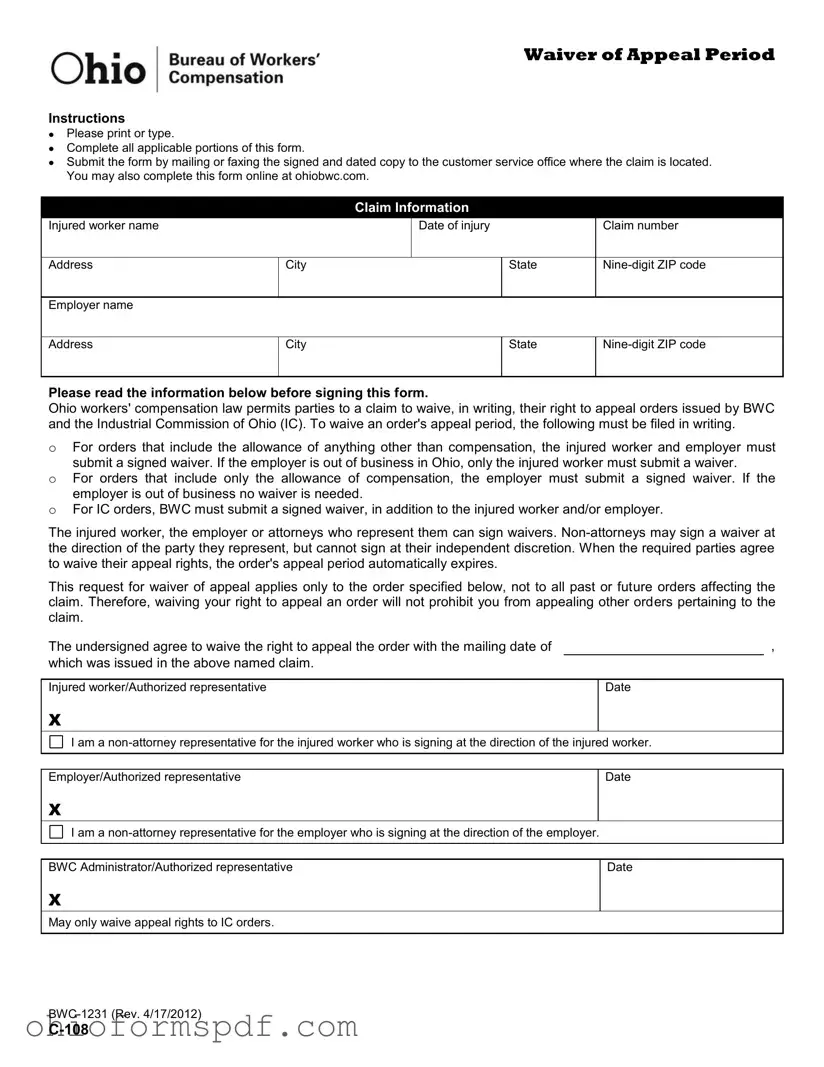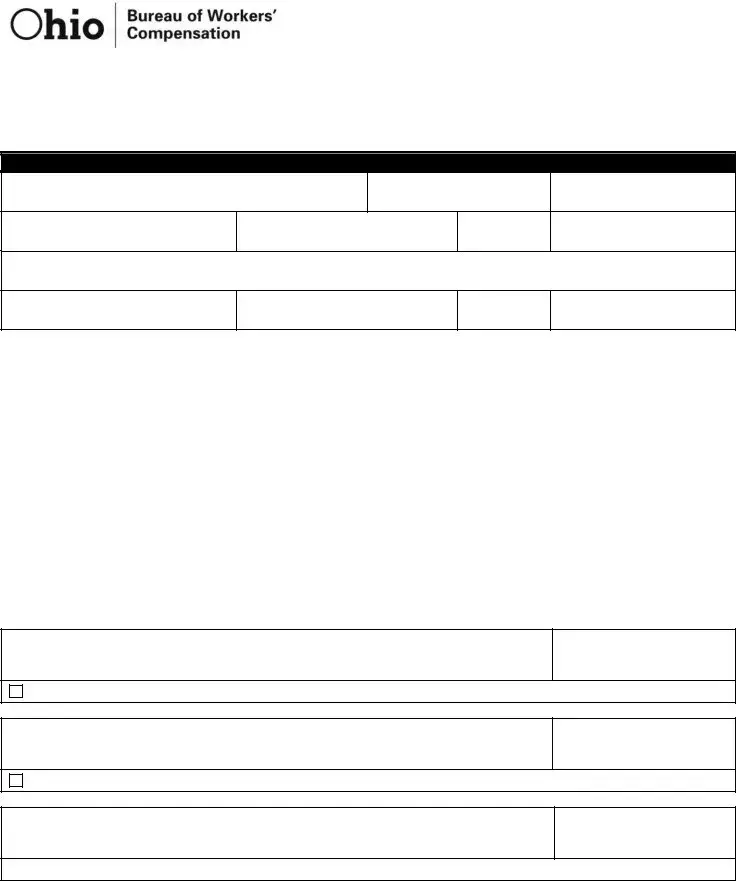The C-108 form in Ohio, which is associated with workers' compensation and the waiver of the appeal period, shares similarities with the Release of Liability form. Like the C-108, a Release of Liability requires parties to voluntarily give up their rights to pursue legal action once they sign the document. Both forms necessitate a clear understanding from the parties involved about the rights they are relinquishing. This mutual understanding helps prevent future disputes, ensuring that all individuals are aware of their decisions' ramifications.
Similarly, the Settlement Agreement form found in various legal contexts parallels the C-108 form in its function of preventing further dispute by having parties agree to specific terms. The Settlement Agreement often includes clauses that preclude parties from suing on the same issue again, much like how the C-108 form waives the right to appeal decisions in a workers' compensation claim. Through these agreements, parties seek to find a resolution that is mutually acceptable, closing the door on that particular dispute.
The C-108 form also resembles a Consent Decree, particularly in legal disputes that involve regulatory or compliance issues. A Consent Decree, agreed upon by all parties and approved by a judge, effectively ends the litigation while ensuring that certain actions are taken or refrained from. Like the C-108, it is a written agreement that concludes an issue between parties, but with the added weight of judicial oversight and enforcement capability, ensuring that agreements are adhered to.
The Non-disclosure Agreement (NDA) is another document that echoes the essence of the C-108 form, though in a different realm. NDAs are designed to protect sensitive information, requiring parties to keep certain data confidential. Both the NDA and the C-108 involve written commitments from the parties, focusing on the assurance that specific rights or privileges (to share information or to appeal, respectively) are willingly foregone to achieve a broader goal or agreement.
Another similar document is the Power of Attorney (POA), which grants someone the authority to act on behalf of another in legal or financial matters. While the POA often deals with broader scopes of authority, the C-108 form requires individuals to act within a restricted boundary – waiving the right to appeal a workers' compensation decision. Both, however, are pivotal in their capacities to alter the course of legal rights and obligations based on the agreements made within them.
The Arbitration Agreement also shares a conceptual similarity with the C-108 form by focusing on how disputes are resolved. By signing an Arbitration Agreement, parties agree to settle a dispute outside of court, which inherently involves waiving certain legal rights, including a broad right to appeal. The C-108 essentially achieves a similar function within the specific context of workers' compensation claims by precluding further appeals on agreed-upon matters.
Finally, the Medical Release Form, while primarily used in healthcare to authorize the sharing of personal health information, mirrors the C-108 form's principle of informed consent and waiver of rights. Just as individuals must acknowledge and agree to the dissemination of their health information, parties to the C-108 form must understand and agree to waive specific legal rights. Both documents underscore the importance of a conscious decision to relinquish certain privileges or rights for a defined purpose.

